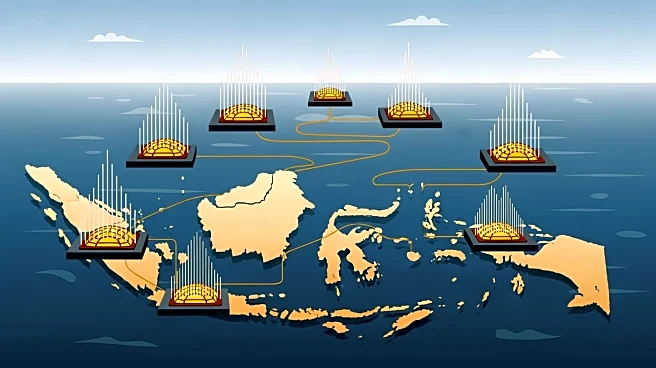What's Happening?
A 5.7 magnitude earthquake occurred in the Gulf of California, Mexico, early Friday morning, as reported by the U.S. Geological Survey (USGS). The earthquake's epicenter was located 46.6 miles northeast
of Santa Rosalía, Mexico, at a depth of 6.2 miles. The USGS issued a green alert, indicating a low likelihood of casualties and economic damage. The region is known for its seismic activity due to its position atop three large tectonic plates. The movement of the Pacific and North American plates in this area is responsible for the frequent earthquakes, including the current one.
Why It's Important?
The earthquake's occurrence in a seismically active region highlights the ongoing geological activity in the area. While the USGS has indicated a low risk of casualties and damage, the event underscores the importance of preparedness in regions prone to seismic activity. The Gulf of California's tectonic movements are part of a larger system that includes the San Andreas fault, which is significant for both Mexico and the southwestern United States. Understanding these patterns is crucial for developing effective disaster response strategies and infrastructure resilience.
What's Next?
Given the low likelihood of significant damage, immediate large-scale responses may not be necessary. However, continued monitoring by the USGS and local authorities will be essential to assess any aftershocks or further seismic activity. Residents in the region are advised to remain vigilant and follow any guidance from local emergency services. The event may prompt discussions on improving earthquake preparedness and infrastructure resilience in seismically active areas.
Beyond the Headlines
The earthquake serves as a reminder of the complex geological interactions at play in the Gulf of California. It also highlights the need for international cooperation in monitoring and responding to seismic events, as these natural phenomena do not adhere to national boundaries. The ongoing study of tectonic movements in this region can provide valuable insights into earthquake prediction and risk mitigation strategies.












